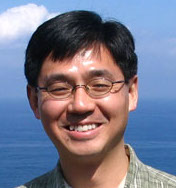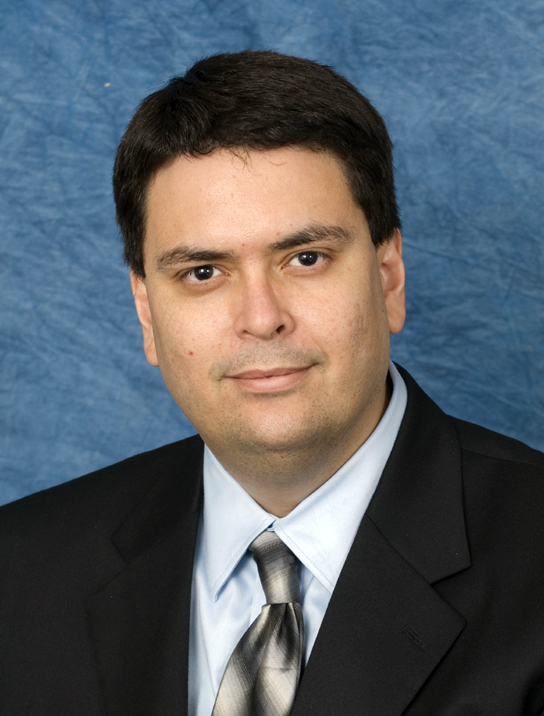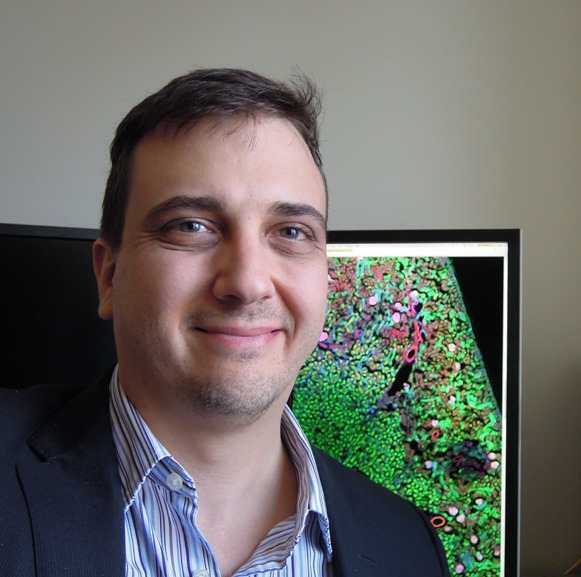Keynote Speakers
Invited Speakers
 |
Daniel BratProfessor and Interim Chair, Department of Biomedical Informatics, Vice Chair, Pathology and Laboratory Medicine, Emory UniversityDr. Brat is a diagnostic neuropathologist and a member of the Cancer Cell Biology Program of the Winship Cancer Institute, where he directs a lab that investigates mechanisms of glioma progression, including the contributions of hypoxia, genetics, angiogenesis and stem cells. He leads the scientific efforts of the In Silico Center for Brain Tumor Research at Emory, which uses large scale clinical and molecular databases, such as The Cancer Genome Atlas (TCGA), to address fundamental questions in human glioma behavior. Dr. Brat is the Director of the Cancer Tissue and Pathology Shared Resource at Winship, which includes a full service histology laboratory and a tissue procurement service. He is Board certified in Anatomic and Neuropathology and understands the critical issues in current neuro-oncology practice and research.
|
Advancing Precision Medicine in Adult Gliomas Using Data from The Cancer Genome Atlas Genomics are shaping the future of precision medicine in cancer by enabling treatments to be tailored to the genetic signature of an individual's tumor. The Cancer Genome Atlas (TCGA) is an effort by the National Cancer Institute to catalog the genomic alterations in 31 different human cancers and to identify new disease sub-classifications that can improve cancer treatment strategies. This talk will discuss the TCGA analysis of lower-grade glioma (LGG) brain tumors, and the important role of learning algorithms in analyzing the multifaceted genomic data produced by TCGA data. I will present a summary of the findings of the LGG Analysis Working Group, and illustrate how computational approaches can be applied to public TCGA data to investigate fundamental questions in cancers.
|
|
 |
Jie LiangBioinformatics Program, Department of Bioengineering, Department of Computer Science, College of Engineering and College of Medicine, University of Illinois at ChicagoJie Liang is the Richard and Loan Hill professor in the Richard and Loan Hill Department of Bioengineering at the University of Illinois at Chicago. He joined UIC in 1999 as an assistant professor, and was promoted to associated professor in 2003, and to full professor in 2007. He received his B.S. degree in Biophysics from Fudan University in 1986, MCS and Ph.D. in Biophysics from the University of Illinois at Urbana-Champaign in 1994. He was an NSF CISE postdoctoral research associate (1994-1996) at the Beckman Institute and National Center for Supercomputing and its Applications (NCSA) in Urbana, IL. He spent eight months as a visiting fellow at the NSF Institute of Mathematics and Applications at Minneapolis. From 1997 to 1999, he was an Investigator at SmithKline Beecham Pharmaceuticals in Philadelphia. He was a recipient of the NSF CAREER award in 2003. He was elected as a fellow of the American Institue of Medicine and Biological Engineering in 2007. He is a University Scholar.
Dr. Liang's research interests include systems biology, computational bioengineering, bioinformatics, and computational biophysics, especially the areas of structural bioinformatics, computational proteomics, molecular stochastic networks, and cellular pattern formation. Current projects in his lab include protein function prediction, evolution analysis, membrane protein/nanodevice assembly, stochastic networks, tissure regeneration and wound healing, cell polarity, and cellular pattern formation. His recent work can be accessed at (http://www.uic.edu/~jliang). |
Multiscale Spatial and Temporal Signaling and Patterning of Cells and Tissues: Stochastic Control Networks, 4D Nucleosome, and Tissue Wound HealingUnderstanding and manipulating the machineries of cells and tissues requires a multi-scale approach that examines details of individual gene/protein, interactions of multiple proteins, and genetic circuit networks to elucidate complex behavior of cellular and tissue states and their spatio-temporal pattern formation. We describe new development in the fundamental theory to solve the discrete chemical master equation (dCME) that can account for stochastic control of rare and small copy-number events important for determining cellular fate, including the mb-dCME algorithm for exact time-evolving probabilistic landscape computation without Gillespie simulation or Fokker-Planck/Langevin approximation. We report discoveries of complex multistable landscapes arising from simple network motifs, without requring feedback loops or cooperativities that were thought to be obligatory. We further discuss control of epigenetic states, and the robustness of wild type versus mutant cells. The important roles of spatial confinement in shaping the scaling and folding landscape of chromosome structure whose misfunction are behind 70% of known cancer will be also highlighted, with emphasis on geometric sequential Monte Carlo method for denoising and for generating physical models. At the cellular level, we describe a geometric model and an algorithm for simulating dynamic spatio-temporal pattern formation of cell populations and how the process of wound healing can be studied through simulation. It our belief that this multi-scale approach will be useful for future engineering of biological systems.
|
|
 |
Steve QinDepartment of Biostatistics and Bioinformatics, Emory University Zhaohui (Steve) Qin is an Associate Professor of Biostatistics and Bioinformatics at Emory University. He completed a BS degree in Probability and Statistics at Peking University and MS and PhD degrees in Statistics at the University of Michigan. In addition, he was a Postdoctoral Fellow at Harvard University in the Department of Statistics. The major goal of Dr. Qin’s work is to utilize his extensive background in statistics to provide analytical tools for the genetics and genomics research community. His current research focuses on topics such as developing and evaluating model-based methods to analyze high-throughput genomics and epigenomics data from ChIP-Seq, RNA-Seq, and Hi-C experiments, biological BigData integration and mining, and Bayesian approaches and statistical computing. In addition to method development, he has collaborated extensively with biologists and clinicians to assist their efforts of identifying novel biological insights from their experimental data.
|
Inference of correlated hidden Markov models with application to ChIP-Seq compendium dataHidden Markov models (HMM) have been widely used to analyze large-scale genomic data because of its ability to incorporate spatial correlation, in areas such as genome-wide mapping of binding sites for regulatory proteins. With advances in sequencing technology, it is now common to analyze data for multiple proteins jointly, but existing algorithms analyze data for each protein separately. However, extending the HMM framework to a multivariate form is not trivial because hidden state space increases quickly with the number of experiments and it is therefore of interest to develop a powerful yet computationally tractable algorithm. Here we present a fast inferential method for correlated hidden Markov models for multiple sequential data (series). Instead of jointly inferring hidden states for all series, we adjust the transition kernel of each series with the hidden state configuration in other correlated series and keep the hidden state inference marginal in each. Through simulation, we show that the new scheme achieves sensitivity comparable to the fully coupled HMM fit at a computational cost as low as fitting an independent HMM for each series separately. The method was applied to the analysis of histone modification data in human T cells.
|
|
 |
Gari CliffordDepartment of Biomedical Informatics, Emory UniversityDr. Clifford is trained as a PhD in Neural Networks and Biomedical Engineering from the University of Oxford, United Kingdom. He received postdoctoral research training from the Massachusetts Institute of Technology when he later became a Principal Research Scientist, managing the development of the world's largest open access critical care database (MIMIC II). Since 2009, he has served as Associate Professor and Fellow of Kellogg College at the University of Oxford in the Department of Engineering Science, including leading the Intelligent Patient Monitoring Group, and Director of the Centre for Doctoral Training in Healthcare Innovation at the Institute of Biomedical Engineering (IBME). Dr. Clifford has an international reputation in critical care data analysis and the application of signal processing and machine learning to medicine. Dr Clifford helped found the Sleep, Circadian Rhythm and Neuroscience Institute (SCNi) at the University of Oxford, where he is an Honorary Professor and leads one of its five themes.
|
Crowdsourcing Confidence IntervalsMachine learning provides great potential for big data in healthcare. However, for the clinic community to trust and use algorithmic outputs, the answer must generally map back to some notion of clinical understanding. This often means that supervised or semi-supervised learning is required. However, as the volume of data grows, the scale of data labeling becomes rapidly unassailable. Moreover, even when human labels are available, the large intra- and inter-observer variance means the accuracy of any algorithm can be much lower than is comfortable and the error rates can often be unknown. I will present an approach which leverages crowd sourcing to solve both these problems simultaneously and allow the non-parametric construction of confidence intervals in machine learning predictions.
|
|
 |
Ulisses Braga-NetoDepartment of Electrical and Computer Engineering, Texas A&M University Ulisses M. Braga-Neto received the Ph.D. degree in Electrical and Computer Engineering from The Johns Hopkins University, Baltimore, MD, in 2002. He held a post-doctoral fellowship in the Section of Clinical Cancer Genetics at the University of Texas M.D. Anderson Cancer Center, Houston, from 2002 to 2004. From 2004 to 2007, he was a researcher at the Virology and Experimental Therapy Laboratory at the Oswaldo Cruz Foundation (FIOCRUZ), in Recife, Brazil. In 2007, he joined the faculty of the Department of Electrical and Computer Engineering, Texas A&M University, College Station, TX, where he is currently an Associate Professor. He is also a member of the Center for Bioinformatics and Genomics Systems Engineering at Texas A&M University. He received an NSF CAREER Award in 2008. His research interests include statistical pattern recognition, optimal estimation for dynamical systems, Bayesian inference, and the analysis of genomic and proteomic expression data, with applications in medical and agricultural research.
|
Cross-validation under separate sampling: strong bias and how to correct itIt is commonly assumed in pattern recognition that cross-validation error estimation is ‘almost unbiased’ as long as the number of folds is not too small. While this is true for random sampling, it is not true with separate sampling, where the populations are independently sampled, which is a common situation in bioinformatics. We demonstrate, via analytical and numerical methods, that classical cross-validation can have strong bias under separate sampling, depending on the difference between the sampling ratios and the true population probabilities. We propose a new separate-sampling cross-validation error estimator, and prove that it satisfies an ‘almost unbiased’ theorem similar to that of random-sampling cross-validation. We present two case studies with previously published data, which show that the results can change drastically if the correct form of cross-validation is used.
|
|
 |
Lee CooperDepartment of Biomedical Informatics, Emory UniversityDr. Cooper's research combines microscopy imaging, genomics and patient outcome to identify relationships between morphology, genetics and transcription. He has developed these techniques in studies of glioblastoma tumors to identify morphology-driven disease subtypes and microenvironmental influences on transcriptional regulators.
|
Novel genotype-phenotype associations in human cancers enabled by advanced molecular platforms and computational analysis of whole slide imagesAdvances in computing, imaging and genomics technology present new opportunities for investigating relationships between histology, molecular events and clinical outcomes. Whole slide imaging and image analysis methods enable the mining of massive whole-slide digital image archives to capture quantitative features describing histological characteristics of cancer tissues. These measurements represent a new dimension in tissue-based studies, and when combined with genomic and clinical endpoints, can be used to explore biologic characteristics of the tumor microenvironment and to discover new morphologic biomarkers of genetic alterations and patient outcomes. Using motivating examples from the study of glioblastoma brain tumors (GBMs), we demonstrate how public data from The Cancer Genome Atlas (TCGA) can serve as an open plat-form to conduct in silico tissue based studies that integrate existing image/genomic/clinical data resources. We show how these approaches can be used to explore the relation of the tumor microenvironment to genomic alterations and gene expression patterns and to define nuclear morphometric features that are predictive of genetic alterations and clinical outcomes. Challenges, limitations and emerging opportunities in the area of quantitative imaging and integrative analyses are also discussed.
|
|
 |
Ranadip PalDepartment of Electrical & Computer Engineering, Texas Tech University Ranadip Pal is currently an Associate Professor in the department of Electrical and Computer Engineering at Texas Tech University. He received his B. Tech. degree in Electronics and Electrical Communication Engineering from the Indian Institute of Technology, Kharagpur, India in 2002 and the M.S. and PhD degrees in Electrical Engineering from Texas A & M University, College Station in 2004 and 2007 respectively. Following his doctoral studies, he joined Texas Tech University as an Assistant Professor in 2007. Dr. Pal is the recipient of the NSF CAREER Award in 2010, President’s Excellence in Teaching Award in 2012 and the Whitacre Research Award in 2014.
Dr. Pal’s research interests include stochastic modeling and control, genomic signal processing and computational biology. Current projects in his research group include drug sensitivity prediction from functional and genomic characterizations, network inference and robustness analysis of genetic regulatory network modeling (http://www.myweb.ttu.edu/rpal/).
|
Drug sensitivity predictionDrug sensitivity prediction based on genomic characterization remains a significant challenge in the area of systems medicine. We will discuss multiple approaches that have been proposed for mapping genomic characterizations to drug sensitivity. In particular, we will consider ensemble-based approaches and the gain in prediction by incorporating different heterogeneous genetic characterizations. We will also discuss an alternative approach where drug sensitivity prediction is considered based on drug-protein interactions and its integration with genomic data. We will conclude the tutorial by discussing experimental approaches to validate predictions provided by the modeling techniques.
|
|
